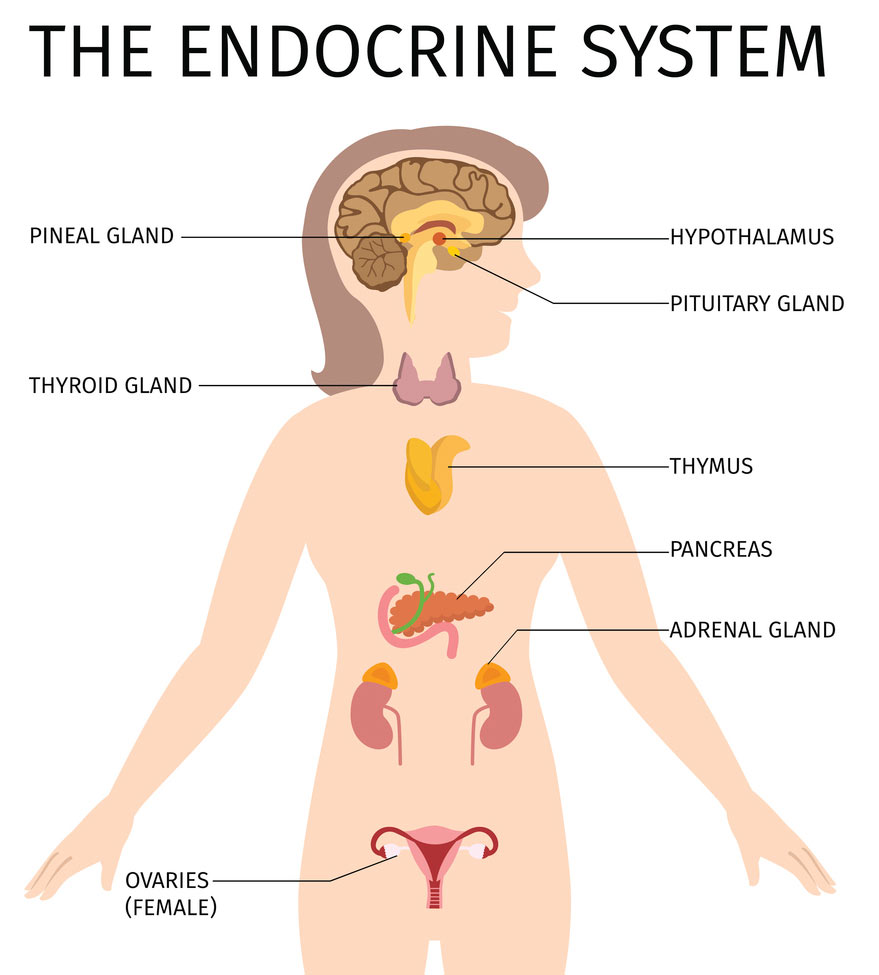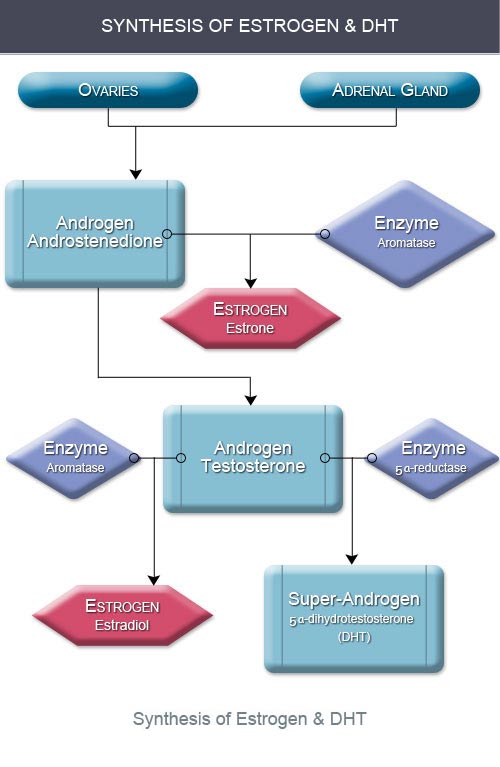Hormones and Female Pattern Hair Loss

Both men and women produce testosterone and estrogen. Testosterone is an androgen hormone commonly considered the male sex hormone because men produce much more of it than women. However, testosterone is also used to make estrogen—a predominately female sex hormone—so women produce testosterone androgens as well. 77, 81, 84
Testosterone and Estrogen in Women
Ovaries produce about 25% of the testosterone in women, and the adrenal gland produce an equal amount. In addition, they produce weaker androgen hormones, such as androstenediones. The remaining 50% of testosterone is produced when weaker androgens are converted at the tissue and organ level, such as in hair follicles. 77, 81, 84
Estrogen is metabolized from the androgens testosterone and androstenedione by aromatase enzymes: 81
Do Androgen Levels Affect Female Hair Loss?
Androgen hormone levels do play a role in female pattern hair loss (FPHL), also known as female androgenetic hair loss (female AGA). This is especially true in some women with high levels of androgens due to an underlying medical condition (such as PCOS). However, current research suggests that androgens may have less of a direct effect than they do in male pattern balding. 2
For example, DHT (a potent form of testosterone) causes substantial shrinking of hair follicles in men with common male balding. In women with AGA follicle size is not reduced to nearly the same extent and is often only significant in women with severe hair loss. Conversely, some women with extremely high androgen levels have insignificant levels of hair loss. 22, 30, 85
The hair loss effects of androgens may be lessened in women by the hair-protective effects of estrogen. Ratios of estrogen to androgens may be a better way of understanding the impact of androgens in FPHL. Levels of other substances (e.g., sex binding hormone globulin and aromatase enzymes) affect these ratios by preventing free testosterone from converting to DHT. 30, 84, 85
Too Much Testosterone and DHT?
Some women produce higher levels of androgens than normally found in females, which can contribute to female balding. Excess androgen production can be due to heredity. It is also caused by adrenal and ovarian disorders that stimulate androgen hormone secretion (such as PCOS and Cushing syndrome). Other common health conditions that also increase androgen hormone secretion by the ovaries are insulin resistance and diabetes. 22, 100, 102
Hair loss is often a symptom of these endocrine disorders, and is linked to their hyperandrogenetic nature. Evidence suggests there may also be a genetic component of these disorders since they tend to run in families. Hirsutism, a condition caused by high androgen levels where too much terminal-type hair grows in places females normally don't grow any (e.g., facial and back hair), is also considered a symptom of these conditions. 22, 102, 103
Role of Androgen Receptors
However, many women with FPHL do not appear to have an endocrine disorder or high androgen levels. Researchers suggest that in these women the androgen receptors on the scalp hair follicles may be hypersensitive to even normal levels of androgens. 22
This theory may explain why some women with FPHL and normal androgen levels respond so well to flutamide treatment, since this anti-androgen works by blocking the bond between hair follicle androgen receptors and DHT. 104




